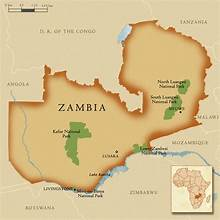Activity 3.1 – Human Population

Least Developed Country Zambia Birth Rate: 36 per 1,000 population GNI: 3,360 Death Rate: 6 per 1,000 population Population Growth: 2.9 % Life Expectancy: Male- 64 Female-67 Fertility Rate: 1990- 6.4 2020- 4.7 Most Developed Country Canada Birth Rate: 10 per 1,000 population GNI: 47,500 Death Rate: 8 per 1,000 population Population growth: 0.2% Life Expectancy: Male-80 Female- 84 Fertility Rate: 1990-1.7 2020-1.5 Zambia Vs Canada After briefly going through both countries' information, it doesn't take much to tell how big of a difference there is to each category. The big difference is precisely why I chose these countries. Zambia, located in eastern Africa, is under lots of poverty. I believe the reason behind this is because of population growth. Compared to Canada, which is a much much higher developed country, their population growth is sitting at only a .2 percent whilst Zambia is at a 2.9 percent and growing. Zambia's population growth al...


